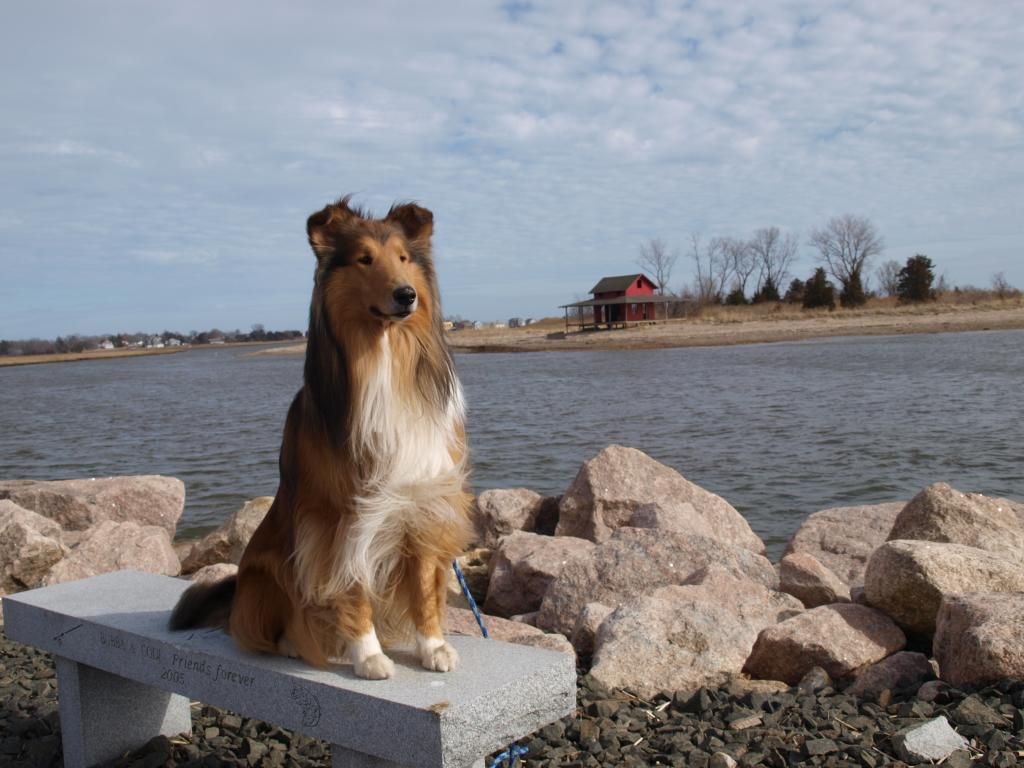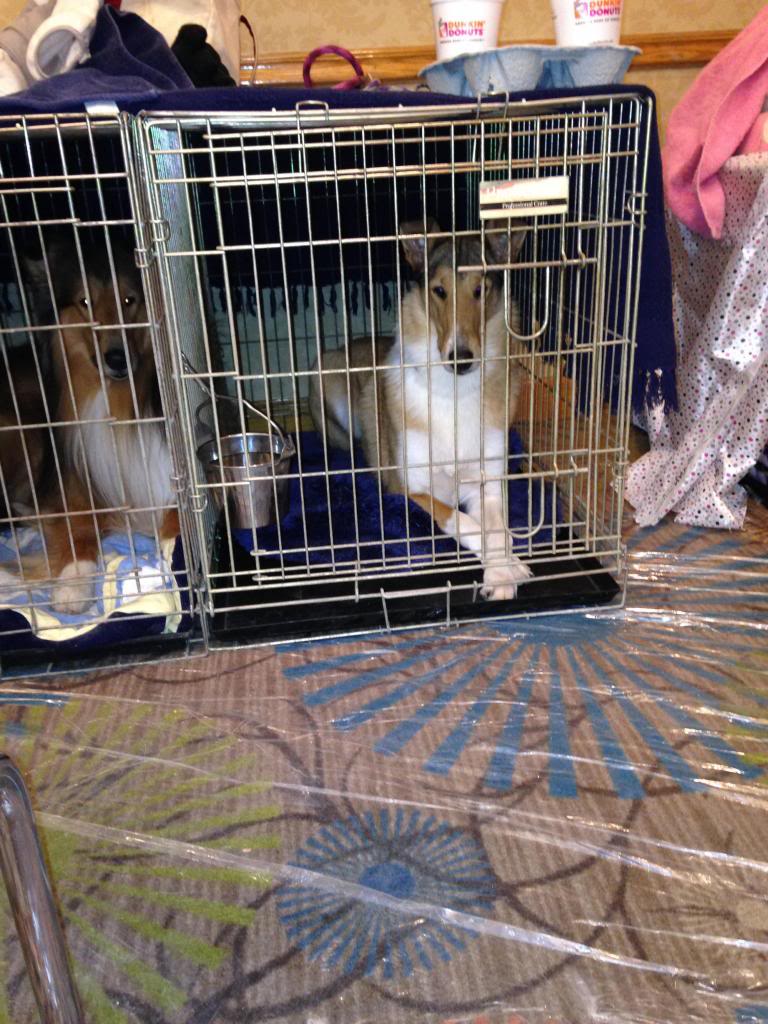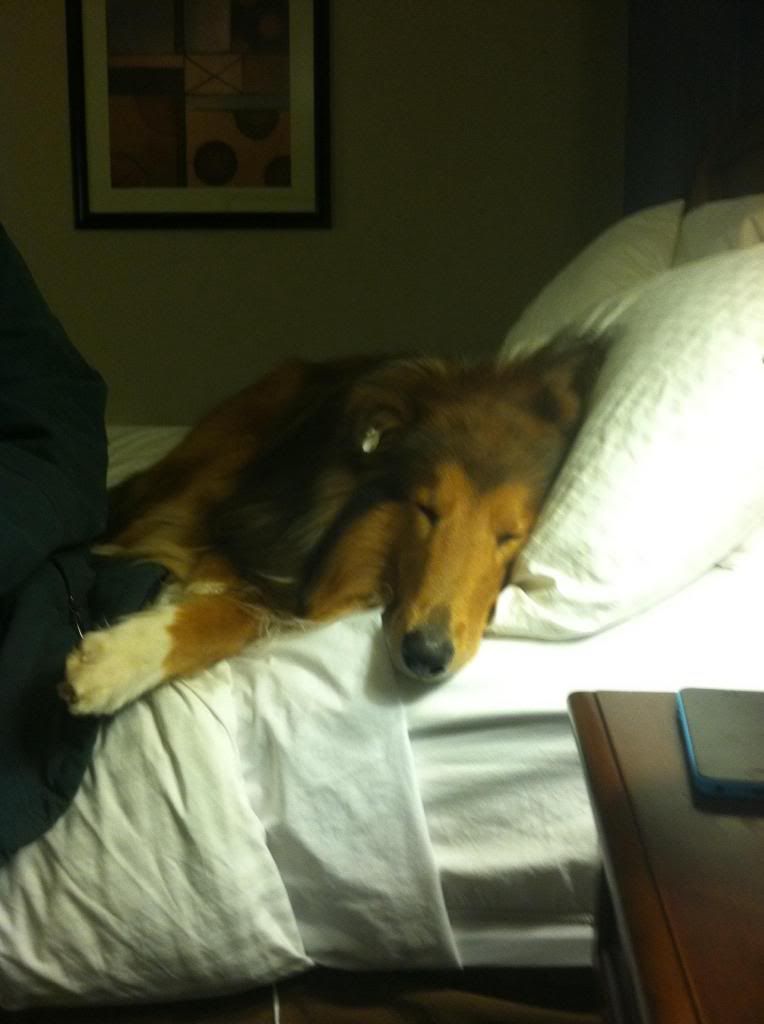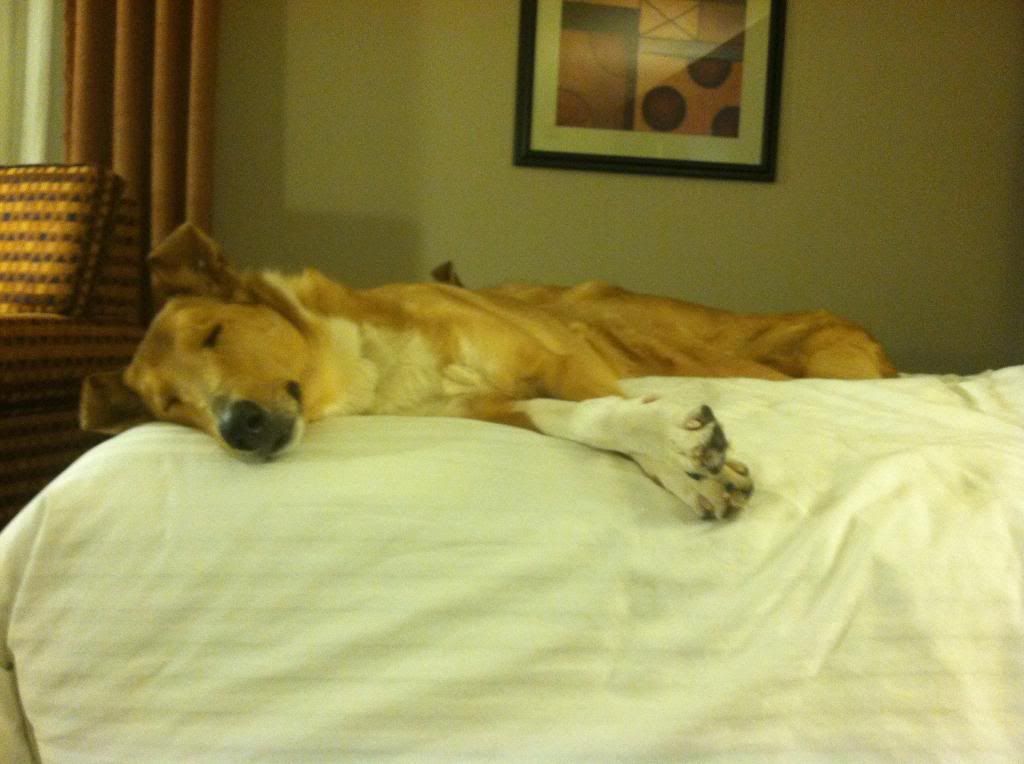First, is it cruel to dogs?
No, I do not think so, and I’m pretty sure most dogs would agree with
me. Dogs who compete at dog shows are
kept in top shape, both their bodies and their coats have to be in great
condition. To keep them fit, show dogs
are exercised on a regular basis, because they have to be kept lean and
healthy. And because they need a beautiful
coat, and bright eyes, they are fed a high quality dog food. I can’t tell you how many arguments I have
had with non-dog show people who think feeding a cheap dog food, which contains a lot of
fillers and food coloring, is perfectly fine for their pets because their
childhood family dog always ate that food.
Or how many people admit to never even walking their dogs, and instead
leave them tied up in the backyard with little or no mental stimulation.
 |
| Most dog show people watch the sun rise from their cars, as they are up and beginning their drive while it is still dark outside! |
Which leads me to my second point, show dogs are more than
just pretty faces. Many people turn on
their televisions on Thanksgiving day to watch the dog show, which is aired
right after the Macy’s Thanksgiving Day Parade.
Or they faithfully tune into the Westminster Kennel Club Dog Show, for
two days every February. If they have
never been to a dog show, then all they might see is a bunch of people in fancy
clothes, running around in a circle with their dogs. What they don’t see on these televised dog
shows are the months, and sometimes years, spent training for these
competitions. The handlers do not simply
run around the ring, if you watch an experienced handler with his or her dog
long enough, you will start to become aware of the subtle signals that are
being transmitted between handler and dog.
I have watched my own daughter with our dogs, and it is like watching a
well matched couple out on the dance floor.
One partner leads, and with the slightest of movements, she guides the
other through the steps of the dance.
This doesn’t happen as soon as they step in the ring, this is the result
of months, and sometimes years, of training.
We start training our collies when they are around six weeks
old, we begin their training by making it all a fun game. Because of this, they view dog shows as fun
and they become excited when they spot us loading up the van with all our dog
show equipment. To be successful as
a show dog, they have to have more than just beauty. If the dog doesn’t enjoy dog shows, they will
look scared or miserable in the ring.
And yes, I have seen dogs who just do not enjoy dog shows, and if the
dog is not having fun, then I do not think they should be forced to
compete. But most dogs, with the right
training, view dog shows as only a positive, rewarding experience. They get groomed regularly, fed a good diet,
exercised daily, trained and socialized from a young age and they get to travel
with their people instead of being left home alone. So how anyone could view this as abuse is
something I can’t comprehend.
And third, what you see on TV is only the end of the
competition. What they do not show is
what comes before the Group judging. Dog
shows are divided into classes. Each dog
breed is judged separately, and the judging begins with the “class” dogs or
bitches. The class dogs are entered
into individual classes, such as 9 – 12 month puppy, American bred, Open, or
Bred-by-exhibitor. The owner chooses
which class to enter their dog or bitch, choosing the class where they think
the dog or bitch will have the best chance of winning first place, which
advances them to the next class, which is the Winner’s Dog/Bitch
competition. The winners of each class
compete against each other in the Winner’s Bitch or Winner’s Dog competition. Whichever dog or bitch is chosen as
“Winner’s” is awarded points towards his or her championship. The number of points awarded depends on how
many dogs/bitches of that breed were entered in the show. To become a champion, a dog needs 15 points
and two of the wins have to be major wins, which means the wins were worth 3, 4
or 5 points each. The males are judged
first, and then the females. When the
judging of the “class” dogs/bitches is completed it is then time for the Best
of Variety competition. In this class,
all the finished champions, along with the Winner’s Dog and Winner’s Bitch,
compete for the best of variety, which means the judge decides who is the best
example of the breed. From this group
the judge will also choose the Best of opposite sex to Best of Variety. So if the judge chose a bitch as the Best of
Variety, he or she will now choose a male who is the best of opposite sex. The judge will also choose between the Winner’s
Dog and Winner’s Bitch, to award “Best of Winners.” The judge may also choose to award "Select dog and/or bitch," which allows the judge to honor other dogs who he or she felt deserved recognition. The dog or bitch who wins Best of Variety
will go on to compete in the Group ring. (herding, toys, sporting, etc) And then the winners of each group will go on
to compete for the coveted title of Best in Show.
A lot of preparation and planning goes into every show dog’s
career, and it all starts before the dog is even born! It really begins when the dog’s breeder carefully
selects a stud dog, breeds their bitch, whelps the litter, and then chooses
show prospects. Think of all this the
next time you watch a dog show on TV, the dog you see in the ring is the result
of extensive time researching pedigrees, choosing a stud dog with the correct
virtues, caring for the pregnant bitch, whelping the litter, raising and
socializing the pups, training them, and then competing in multiple dog shows
to become a champion.




























